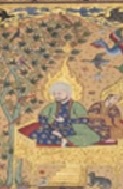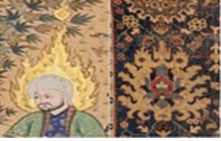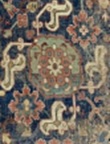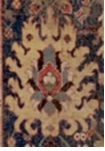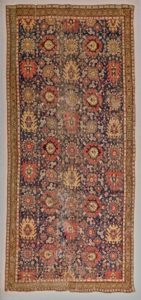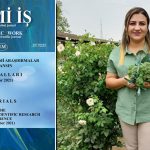A Forgotten Sufi Symbol in Safavid Carpet Art
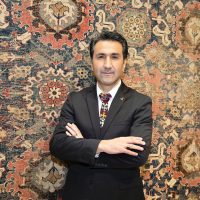
The Qoca* “Harshangh” Misnomer: A Forgotten Sufi Symbol in Safavid Carpet Art
By Amir Oskouei — June 30, 2025
For centuries, a distinctive motif frequently found in classical Safavid carpets has been referred to in the market as “Harshangh” (خرچنگ)—a Persian word meaning “crab.” Dealers and collectors alike have adopted this term, mistakenly associating the form with crustacean-like claws or organic tendrils. However, this misnaming reveals more about modern commercial simplification than historical intent.
A deeper examination of this motif—especially through Safavid-era art, miniature painting, and Sufi tradition—suggests that it holds sacred and symbolic significance far removed from the mundane.
A Closer Look at the Design
In carpets attributed to the late 16th to early 17th centuries, particularly those from Tabriz, Isfahan, or Herat workshops, we see recurring flame-like motifs surrounding a central medallion or lattice structure. These motifs—now casually called “Harshangh”—mirror in both shape and spiritual resonance the flames depicted around the heads of divine messengers, prophets, or Sufi masters in Safavid miniatures.
Compare, for instance, the fire aureole (nūr-e ḥaqq) surrounding the head of a revered figure in a Safavid miniature with the so-called “Harshangh” motif in a courtly carpet. The resemblance is striking—not only visually but also symbolically: representing spiritual illumination, divine guidance, and the transmission of esoteric knowledge.
Symbolism: A Sufi Roadmap
Beyond aesthetics, the structure of this motif reveals a complex spiritual language:
- – The design consists of four symbolic elements, two of which appear repeatedly in Safavid carpets, paired with a swastika-shaped angular motif—a symbol used across ancient cultures to denote cosmic order and spiritual direction.
– Within the Sufi tradition, such symbols were likely used as visual teachings, embedded in carpets commissioned for khānaqāhs, madrasas, dervish lodges, or sirkhānehs—spaces for meditation, learning, and spiritual initiation.
It is possible that this motif functioned as a coded spiritual map, passed from Ostad (master) to murid (student) in Sufi pedagogy. The “flame,” then, was not merely decorative, but a reference to divine presence, the purifying light of truth, or even the fire of annihilation (fanā’) on the Sufi path.
Reclaiming the Motif
Thus, calling this design “Harshangh” strips it of its metaphysical roots. This is not a crab—it is a flame of divine light, a Sufi cipher, and a spiritual marker woven into the heart of sacred textile tradition.
As scholars, collectors, and custodians of this heritage, we must re-examine inherited terminology, especially when it obscures the mystical, philosophical, and artistic legacy embedded in the weft and warp of these masterpieces.
*Qoca: (Pir, Ustad, Murshid, Hoca, Teacher)
By Amir Oskouei — June 30, 2025


